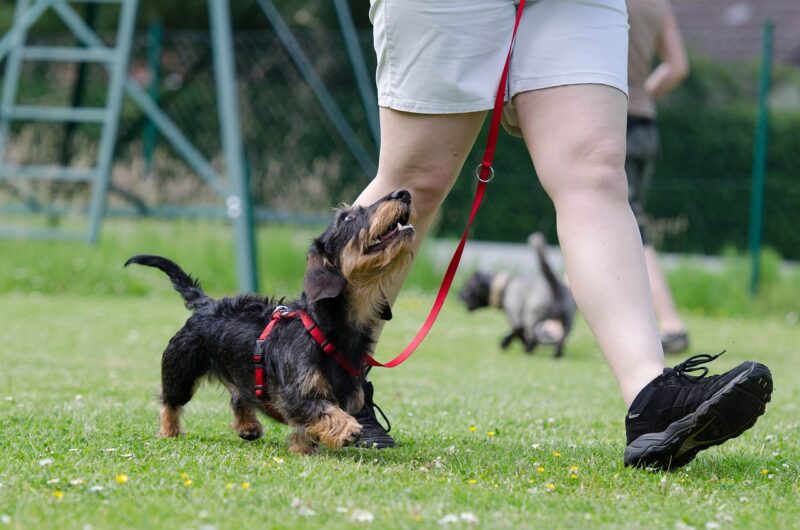The Joy of Pet Training: Why Teaching Tricks to Pets Can Be a Rewarding Hobby
November 14, 2024

Training pets is not just a necessity but also a delightful and enriching hobby that fosters a deep bond between humans and animals. The joy that comes from watching your pet master a new trick or respond to a command is incredibly rewarding, both for the trainer and the pet. This article delves into the multifaceted benefits of pet training, the psychology behind teaching tricks, popular tricks to teach, and tips on how to make training a positive experience for both you and your furry companion.
1. The Importance of Pet Training
Training pets, especially dogs, is essential for their wellbeing. It establishes ground rules for behavior and allows pets to navigate the human world safely. Although training might seem daunting at first, understanding its importance can motivate both pet owners and their furry friends to embark on this rewarding journey together.
Benefits of Training Your Pet:
- Enhanced Communication: Training helps pets understand commands, improving communication and strengthening the bond between owner and pet.
- Safety: Proper training, particularly recall and basic commands, keeps pets safe in potentially dangerous situations like running into traffic or approaching strange animals.
- Socialization: Training provides opportunities for pets to socialize with other animals and people, reducing anxiety and behavioral issues.
- Mental Stimulation: Learning new tricks keeps pets’ minds sharp and engaged, preventing boredom that can lead to destructive behaviors.
- Better Behavior: Training helps prevent undesirable behaviors such as excessive barking, chewing, and jumping on guests by teaching appropriate actions.
2. Understanding the Psychology of Pet Training
Pet training is rooted in psychology, specifically conditioning techniques that encourage desired behaviors. Understanding these principles can enhance your training techniques and make the process more enjoyable for both you and your pet.
Key Concepts in Pet Training Psychology:
- Positive Reinforcement: This method involves rewarding your pet for good behavior, encouraging them to repeat the action. Rewards can include treats, praise, or playtime.
- Timing: Effective training relies on the timing of the reward; the sooner your pet receives a reward after performing a desired behavior, the more likely they’ll remember the association.
- Consistency: Use the same commands and signals consistently to reinforce learning. Mixing commands can confuse your pet and slow down their progress.
- Patience: Training is a gradual process that requires patience. Every pet learns at their own pace, and it’s essential to remain calm and encouraging throughout the training sessions.
3. Popular Tricks to Teach Your Pet
While the flexibility of training allows for a vast array of tricks, here are some popular and fun tricks to begin with. These can vary by species; this section focuses primarily on dogs, with a few mentions for cats and other pets.
Fun Tricks to Get Started:
- Sit: This fundamental command is the easiest trick to teach and serves as a great starting point for training. It encourages pets to associate sitting with receiving attention or treats.
- Shake Hands: Once your pet is comfortable sitting, teaching them to shake paws or hands can be a delightful trick that’s sure to impress family and friends.
- Roll Over: A fun and playful trick that showcases your pet’s agility while also demonstrating their ability to follow multiple commands in a sequence.
- Play Dead: This trick adds a bit of flair and drama and can be fun to teach after your pet has mastered rolling over.
- Fetch: A great way to engage your pet’s natural instincts and provide ample exercise while practicing recalling commands and retrieving prompts.
- For Cats: Teaching cats to come when called or to perform tricks like jumping through hoops can provide mental stimulation and fun features to their playtime.
4. Tips for Successful Pet Training
To maximize the effectiveness of your training sessions, adhere to the following tips:
Essential Training Tips:
- Keep Sessions Short: Young or energetic pets have short attention spans, so limit training sessions to 5-10 minutes and incorporate breaks and playtime as rewards.
- Train in a Distraction-Free Environment: Start training in a quiet space where your pet can focus on you without distractions. Gradually introduce distractions as they become more proficient to build their confidence.
- End on a Positive Note: Always conclude training sessions with a success or a positive reward to create a sense of accomplishment for both you and your pet.
- Be Encouraging and Patient: Use praise and encouragement to motivate your pet. Each pet learns differently, and positive reinforcement can help boost their confidence during training activities.
5. The Bond Between Pet and Owner
Training goes beyond teaching commands; it builds trust and strengthens the bond between pet and owner. Engaging in training sessions together fosters love, respect, and companionship, which are essential components of a healthy pet-owner relationship.
A strong bond increases the likelihood of successful training and enhances the overall experience for both pets and owners. When pets feel loved and secure, they’re more inclined to participate actively in training activities, making it a joyful endeavor.
Conclusion
The joy of pet training lies not only in the tricks you teach your furry friend but also in the relationship you forge along the way. As you embark on this journey, remember that patience, consistency, and positive reinforcement are the keys to success. Celebrate small victories with your pet, and relish the moments of connection and joy that training brings. With each new trick learned, you’re not just teaching; you’re enhancing your bond and creating memories that last a lifetime. Embrace the process, and let the joy of pet training enrich your life together。







